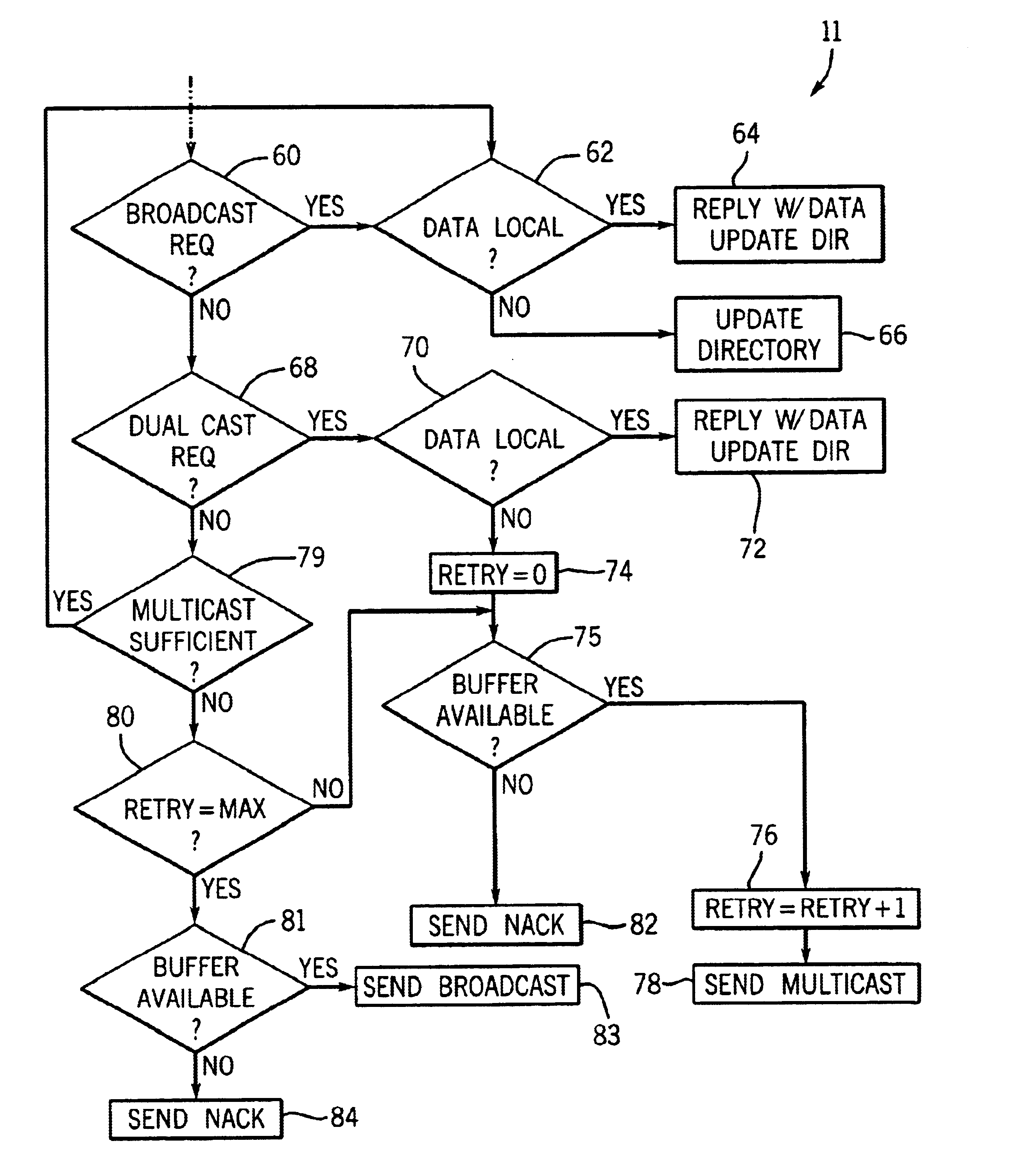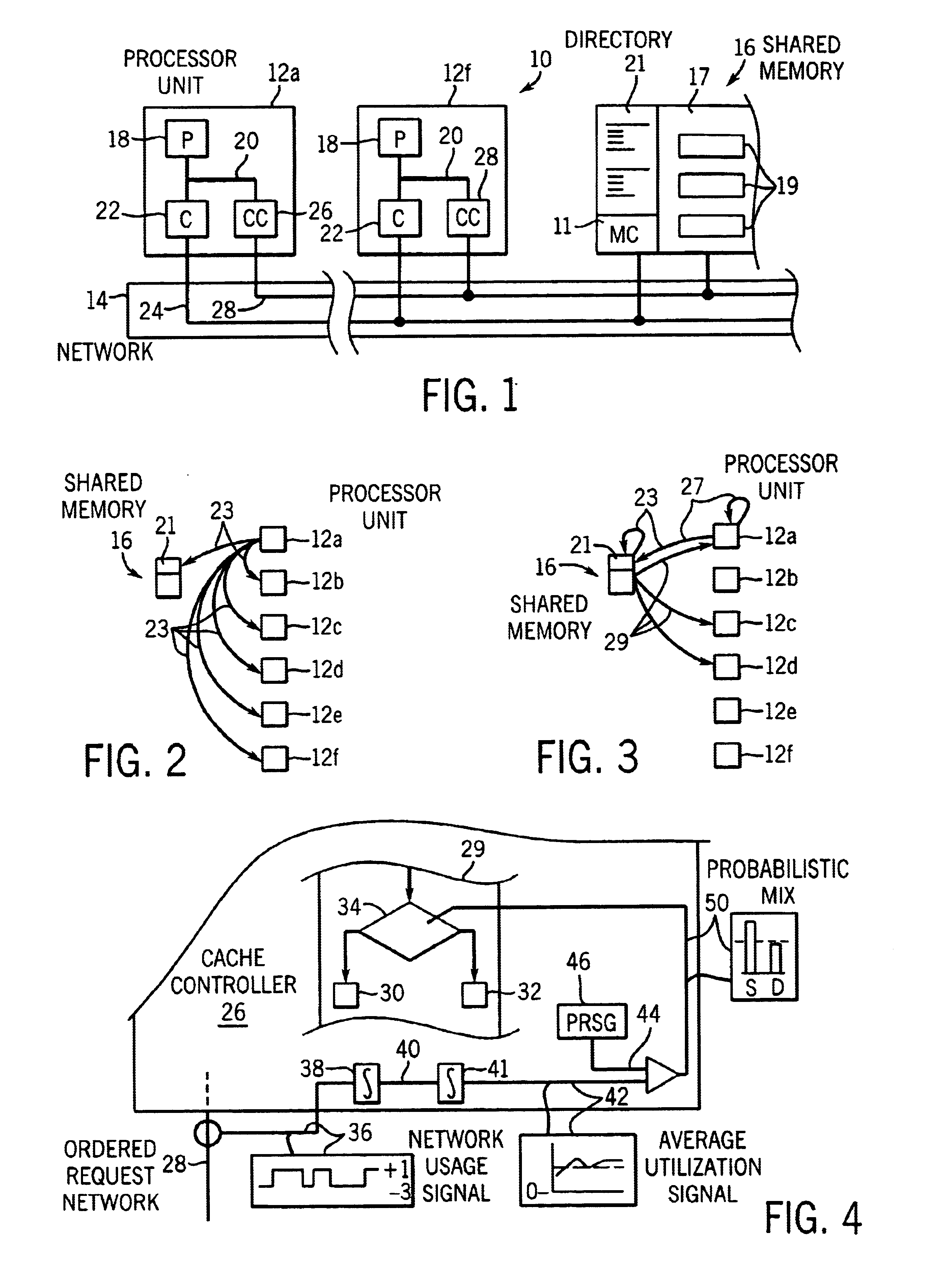Bandwidth-adaptive, hybrid, cache-coherence protocol
a bandwidth adaptive, cache-coherence technology, applied in the direction of memory adressing/allocation/relocation, micro-instruction address formation, instruments, etc., can solve the problems of overwhelming a communication channel, invalidating all other cache memories, and complicated decisions, so as to eliminate ambiguity
- Summary
- Abstract
- Description
- Claims
- Application Information
AI Technical Summary
Benefits of technology
Problems solved by technology
Method used
Image
Examples
Embodiment Construction
[0047]Referring now to FIG. 1, a multiprocessor, shared-memory, computer system 10 includes a number of processor units 12 communicating on a network 14 with a shared memory system 16. Although the shared memory system 16 is depicted as a single unitary structure, in practice, the physical memory of the shared memory system 16 may be distributed among different processor units 12 to be shared over a network or the like. The shared memory system 16 includes a shared memory 17 of conventional architecture and storing a number of memory blocks 19, a directory 21, and a memory controller 11 as will be described below.
[0048]Each processor unit 12 includes a processor 18 connected over an internal bus 20 with a cache memory 22 and cache controller 26. Only two processor units are shown in FIG. 1, however, the present invention is applicable to architectures having an arbitrary number of processor units and is particularly well suited for multiprocessor, shared-memory, computer systems 10 ...
PUM
 Login to View More
Login to View More Abstract
Description
Claims
Application Information
 Login to View More
Login to View More - R&D
- Intellectual Property
- Life Sciences
- Materials
- Tech Scout
- Unparalleled Data Quality
- Higher Quality Content
- 60% Fewer Hallucinations
Browse by: Latest US Patents, China's latest patents, Technical Efficacy Thesaurus, Application Domain, Technology Topic, Popular Technical Reports.
© 2025 PatSnap. All rights reserved.Legal|Privacy policy|Modern Slavery Act Transparency Statement|Sitemap|About US| Contact US: help@patsnap.com



